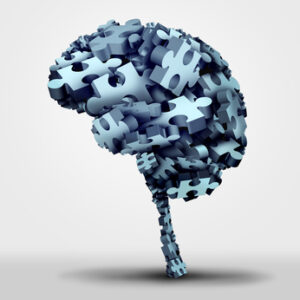Time for a Fresh Look at Diagnosis

Allen Frances, chair of the DSM-IV Task Force, has been a vocal critic of modern psychiatry and diagnosis. He was selected by fellow psychiatrist Awais Aftab to do the first interview for Conversations in Critical Psychiatry, a series for Psychiatric Times that aimed to engage prominent individuals who have made important and constructive critiques of psychiatry. Dr. Frances said while he considered psychiatry to be one of the noblest of professions, it had drifted away from best practice. Too many psychiatrists, he said, are reduced to pill pushing with too little time to really know their patients well. And psychiatrists have not done enough to educate primary care physicians, who prescribe 80% of psychiatric meds, on “the principles of cautious prescribing, proper indications, full consideration of risks, and the value of watchful waiting and the tincture of time.”
I despair the diagnostic inflation that results from a too loose diagnostic system, aggressive drug company marketing, careless assessment, and insurance company pressure to rush to judgement. Diagnoses should be written in pencil, and under-diagnosis is almost always safer and more accurate than over-diagnosis.
With regard to the philosophy of diagnosis, he saw three approaches that he likened metaphorically to three kinds of baseball umpires. The first kind called balls and strikes as they are. The second called them as he saw them. The third said there were no balls or strikes until he called them. Frances likened Robert Spitzer, the architect of the modern DSM, to Umpire 1, along with most biological psychiatrists (See “The Quest for Psychiatric Dragons” Part 1 and Part 2 and “Where There’s Smoke …” for more on Robert Spitzer). “The credibility of this model has been destroyed as we have learned more about the unfathomable complexity of the human brain and the complete failure of genetics and neuroscience to provide useful answers about what causes psychiatric problems.” He thought most psychiatrists aspired to be like Umpire 2, doing their best to define mental disorders in useful ways without any pretention that it is the only way or that current constructs would withstand the test of time.
Dr. Frances expressed concern with the risks of over-diagnosis and advocated for a narrower system with higher diagnostic thresholds. He thought experts in each diagnostic area sought to expand their pet diagnoses and worried too much about missing patients (false negatives) rather than mislabeling patients (false positives). These experts were given a free rein in DSM-5, allowing mislabeling to dominate the field. This led to a checklist approach to diagnosis, which was not intended by the creators of the DSM.
The diagnostic exuberance of DSM 5 confuses mental disorder with the everyday sadness, anxiety, grief, disappointments, and stress responses that are an inescapable part of the human condition. DSM 5 ambitiously mislabels normal diversity and childhood immaturity as disorder, creating stigma and promoting the excess use of medications.
Frances thought if anything in DSM could be misused, it would be misused. “Data drawn from research studies on highly selected patients in the hothouse environment of a university research clinic generalize very poorly to the hustle and bustle of primary care.” On Twitter he pointed to a study he said “blows to bits any hope that statistical modeling” could eliminate the many inherent limitations of “Evidence Based Medicine.” This study, “Many Analysts, One Data Set” concluded that uncertainty in interpreting research results was not just a function of statistical power or the use of questionable research practices. It was also a function of the many reasonable decisions made by researchers as they conducted their research. This did not mean that analyzing data and drawing research conclusions from the data was subjective. Rather, it meant “that many subjective decisions are part of the research process and can affect the outcomes.”
Frances said “Evidence Based Medicine” often generalized poorly to everyday practice because: 1) patients in controlled studies aren’t like unselected patients; 2) research settings differ from real life; 3) biases influence data analyses. “EBM provides a necessary guide, but shouldn’t be worshipped.”
Returning to the interview for Conversations in Critical Psychiatry, he noted how there was an inherent financial, intellectual and emotional conflict of interest that leads every medical specialty to recommend over-diagnosis. He recommended that specialty groups like the APA, the American Psychiatric Association, should never be permitted sole power to determine the diagnostic guidelines for that specialty. Contributions from primary care, public health, health economics and consumers are important. With regard to psychiatric diagnosis, he thought the APA had a special conflict of interest because the DSMs were such a valuable publishing property. The income is crucial for meeting its budget. “This makes frequent revision too tempting and results in an unseemingly hyping of the product.”
Soon after the publication of the DSM-5 in 2013, Allen Frances published an article in World Psychiatry, “The past, present and future of psychiatric diagnosis.” He said psychiatric diagnosis is facing a serious crisis caused by diagnostic inflation. “The elastic boundaries of psychiatry have been steadily expanding, because there is no bright line separating the worried well from the mildly mentally disordered.” Drug companies have used their marketing muscle to sell psychiatric diagnoses by convincing potential patients and prescribers that life problems were really mental disorders caused by chemical imbalances and curable by pills.
We are now in the midst of several market-driven diagnostic fads: attention-deficit/hyperactivity disorder (ADHD) has tripled in rates in the past twenty years; bipolar disorder has doubled overall, with childhood diagnosis increasing forty-fold; and rates of autistic disorder have increased by more than twenty-fold. In the US, the yearly prevalence of a mental disorder is reported at 20–25%, with a 50% lifetime rate, and Europe is not far behind. A prospective study of young adults in New Zealand has reported much higher rates and another of teenagers in the US found an astounding cumulative 83% rate of mental disorders by age 21.
He said the DSM-5 was prepared without adequate consideration of clinical risk/benefit ratios and did not calculate the large economic cost of expanding the reach of psychiatry. It has been unresponsive to widespread professional, public and media opposition “based on the opinion that its changes lacked sufficient scientific support and often defied clinical common sense.” A petition endorsed by fifty mental health associations, that called for an independent review, “using methods of evidence-based medicine, was ignored.” It was time for a fresh look at diagnosis.
On the podcast The Recommended Dose with Ray Moynihan, Frances said the tendency over the last forty years has been to turn the stuff of life into mental disorder. “The best customer for a drug, is someone who is basically well.” We get advertisements for drugs as frequently as we get advertisements for cars or brands of beer. When it comes to most psychiatric problems, people get better on their own in a few weeks. “My concern is that we’re way overmedicating the problems of everyday life and that parallel to that, we are terrifically neglecting people who are really sick.”
One of the areas he gave as an example of transforming ordinary life into mental illness is with mild forms of depression, that really aren’t depression, but are being diagnosed as major depressive disorder. “The drug companies have convinced the world that major depressive disorder is one entity, and that it is always a chemical imbalance, and that it always requires a chemical solution in the form of a pill.” Eleven percent of Americans are taking an antidepressant. Grief in particular is often over diagnosed and over treated with medication. Then there is anxiety; children who have temper tantrums; and so on. “In general, we have taken every day experiences, that are part of the human condition, and we’re over diagnosing them as mental disorders, and we’re way too often providing a pill, when there’s not really a pill solution for every problem in life.”
Children have been over medicalized with Attention Deficit Disorder, which should be properly diagnosed at around 2 or 3 percent of the U.S. population. In the U.S., by the time a child is 18, they have a 15 percent chance of getting the diagnosis. “This is absolutely ridiculous. We are turning immaturity into a disease.” There are also unwarranted increases in diagnosing childhood Bipolar Disorder. And there is a terrific overuse of antipsychotics in children with behavior problems. “I think we are doing a massive, worldwide experiment on immature brains, bombarding them with very powerful chemicals, with no knowledge whatever about what the long-term outcome will be; and without informed consent.”
He thinks the DSM-5 set off on in the wrong direction. Psychiatrists were worrying about underdiagnosis, when they should have been concerned with overdiagnosis. He said we have gone overboard in the developed world in giving too much treatment to people who can afford it, while neglecting people who can’t.
Then he was asked to comment on the role of good evidence that comes from systematic reviews, from summaries of evidence. Frances said evidence is absolutely crucial in making medical decisions, even though you can’t trust all of it. It takes time to gather enough reliable evidence to be confident. “But without evidence it’s a crapshoot that will be governed by commercial, for profit elements that so determine how people are treated.
I think the biggest role for change will come from the evidence-based guidelines and from a press that is educated to advertise to the people reading the article, not just the possible miracle medical benefit, which is always exaggerated, but also the possible realistic risks of side effects.
The biggest problem for the doctor is too little time. The more time you have to get to know the patient, the less likely you’ll be inaccurate in your diagnosis. “It’s the easiest thing in the world to give a diagnosis and to write a pill prescription. It’s the hardest thing in the world, often, to get rid of a diagnosis once it’s been established. . . A wrong diagnosis made in ten minutes can haunt for life.” Medication, given casually, can do great harm and you should be as careful in taking medication as you would be for a major life decision.
Originally posted on 5/19/2020


